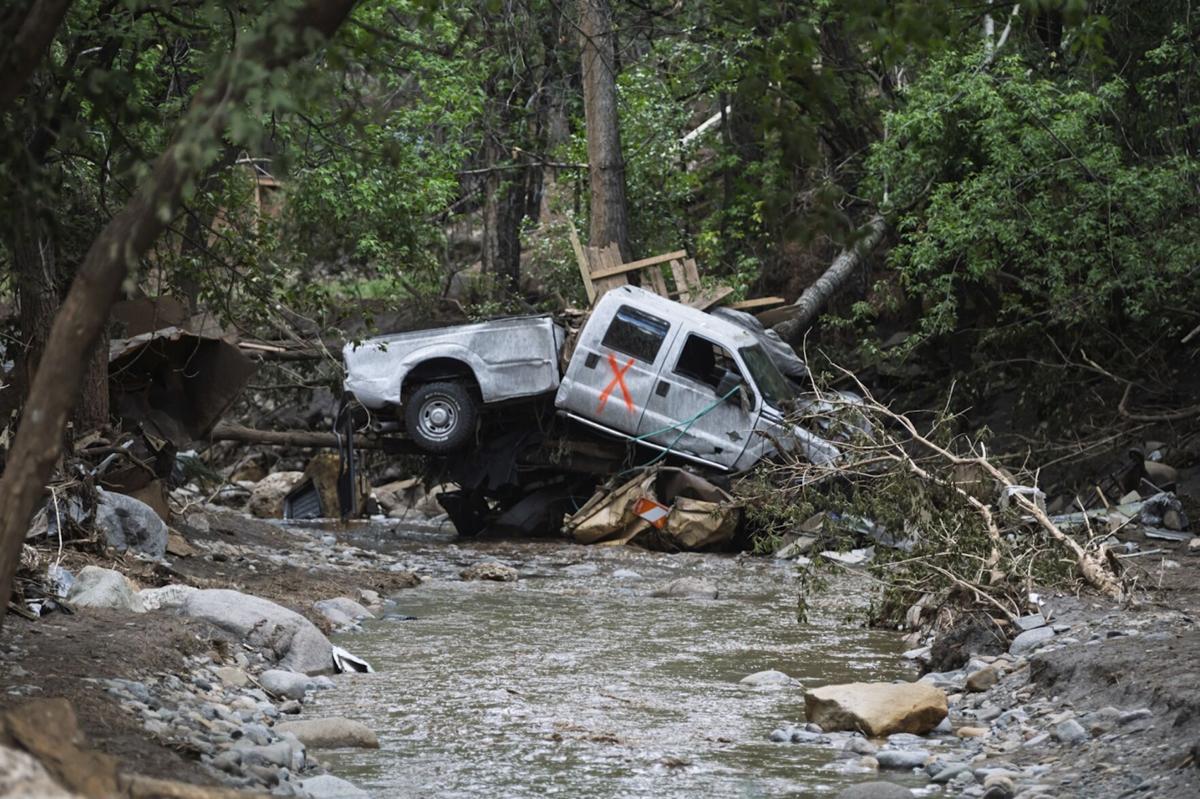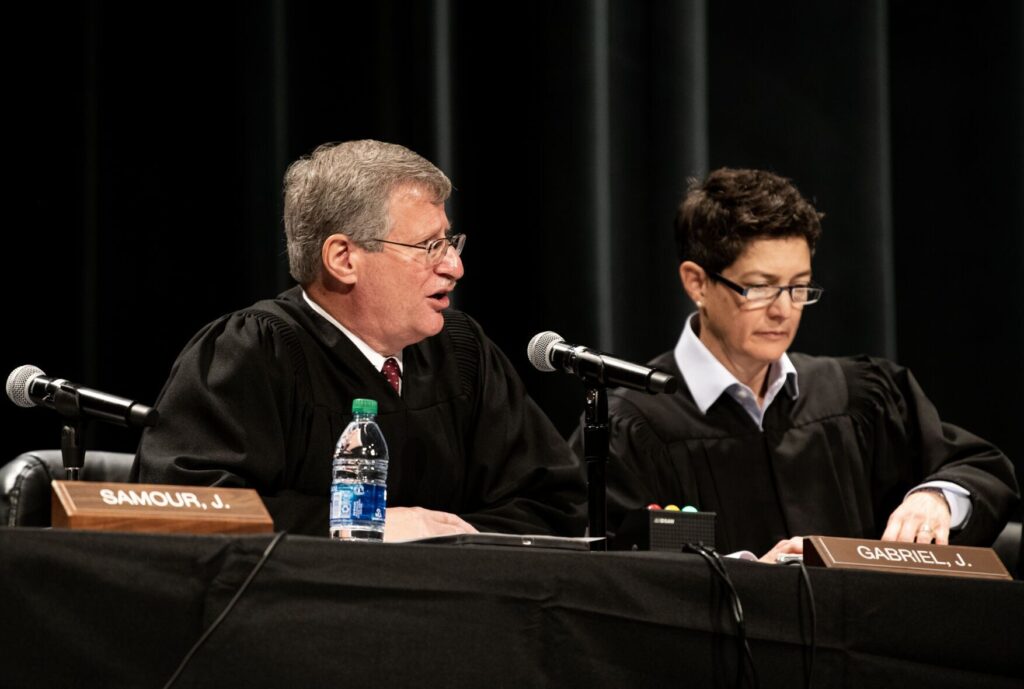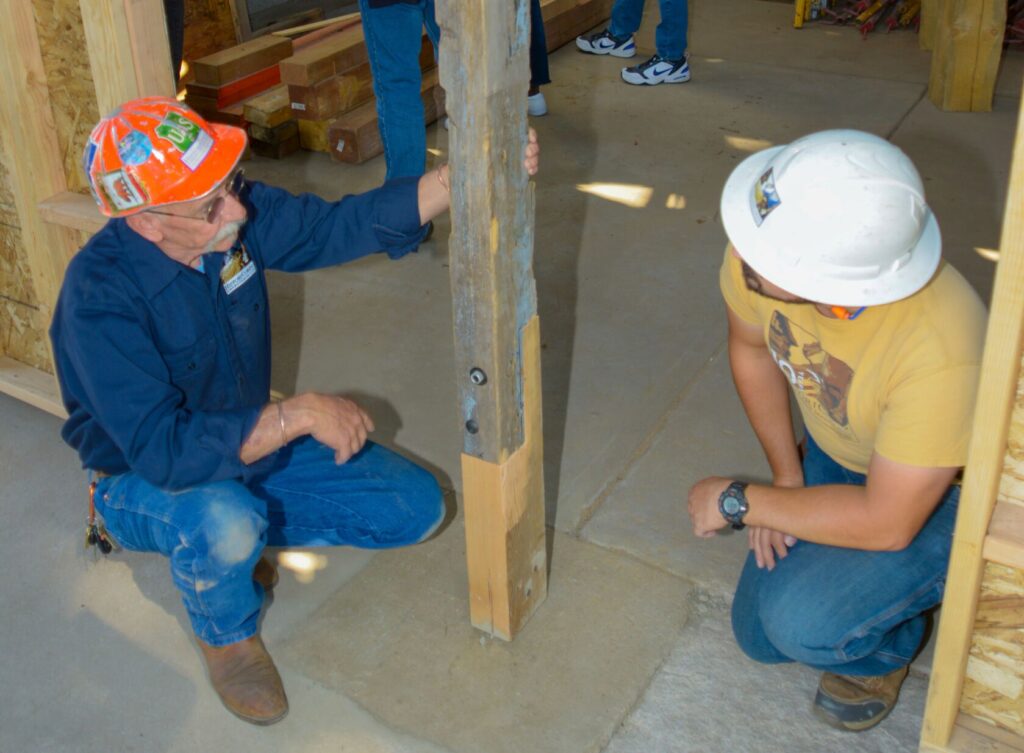Another round of flash flooding prompts rescues in New Mexico mountain village | OUT WEST ROUNDUP

(AP Photo/Roberto E. Rosales)
NEW MEXICO
Flash flooding prompts rescues
RUIDOSO — Another afternoon of heavy rainfall on July 25 prompted flash flooding in the mountain village of Ruidoso, forcing the closure of roads and the rescue of at least five people who were trapped by the rushing water.
The southern New Mexico community has been reeling this summer, with afternoon thunderstorms bringing more rain than the surrounding mountainsides can handle. Past wildfires have stripped the hills of trees and vegetation, leaving the Ruidoso area vulnerable to repeated flooding.
Less than three weeks earlier, massive flooding killed three people and damaged hundreds of homes, resulting in state and federal disaster declarations.
In the earlier flash flood, water rushed from the surrounding mountainside, overwhelming the Rio Ruidoso and rising more than 20 feet on July 9 to set a record. Officials said the area received about 3.5 inches of rain over the South Fork burn scar in just an hour and a half.
Colorado looks back on major floods in the wake of Texas tragedy
The July 9 flood took with it a man and two children who had been camping at a riverside RV park. Their bodies were found downstream. All other people who had been missing were accounted for.
On July 25, residents shared videos on social media that showed walls of muddy water coursing down creeks and over roads, ripping apart a mobile home and toppling trees along the way. Authorities were blocking traffic to keep vehicles out of the water as onlookers watched from higher ground.
Forecasters with the National Weather Service routinely issued flash-flood watches and warnings as the summer rainy season was in full force. They reported on July 25 that one stretch of the Rio Ruidoso had risen to roughly 12.5 feet as a result of the burn-scar flooding.
WYOMING
Coal mine to extract rare earths
CHEYENNE — The developer of what would be the first new coal mine in Wyoming in decades is launching a potentially half-billion-dollar effort to extract rare earth metals from the fossil fuel that are crucial for tech products and military hardware.
Energy Secretary Chris Wright, Wyoming Gov. Mark Gordon, and Wyoming’s congressional delegation took part in a ribbon-cutting ceremony on July 11 for Ramaco Resources, Inc.’s Brook Mine outside Ranchester in northeastern Wyoming.
Wright said the mine can not only produce coal but help “break our dependence” on China, a source of rare earth elements.
Wright’s involvement underscores President Donald Trump’s determination to advance fossil fuel projects and mining and reverse former President Joe Biden’s moves to support for renewable energy.
Legislation signed the previous week lowered royalty payments for companies mining coal on public lands and mandated officials make available for potential mining an area greater in size than Connecticut.
The minerals capturing the administration’s attention were not just coal but rare earths — a family of 17 metallic elements with unusual properties that make them useful in modern technology, from electric car batteries and wind turbines to military targeting devices.
The only operating U.S. rare earths mine is at Mountain Pass in California. Nearly all of the nation’s supply comes from China, the source of nearly 90% of the world’s supply.
Rare earths aren’t especially rare but so scattered they are difficult to bring together in useful quantities.
Liberty Bell replica rededicated
CHEYENNE — Gov. Mark Gordon reminisced on the sounds that rang from the Liberty Bell in Philadelphia in July 1776 as he rang Wyoming’s Liberty Bell replica after it underwent restoration and was placed in a new frame and location.
Wyoming’s replica bell sat on the southwest corner in front of the Wyoming State Capitol for many years, slowly falling into disrepair. When the Capitol began undergoing comprehensive renovation and restoration, the bell was removed as part of the Capitol Square Project.
Since around 2018, visitors wishing to see the bell would have to call to schedule a visit to an off-site storage area.
Kevin Ramler, director of the Wyoming State Museum, said the yoke at the top of the bell had completely collapsed because it couldn’t support its own weight, so it was placed on wooden beams.
Governor Polis seeks public input on $29 million pedestrian bridge at the Capitol
To address this, the bell was shipped to Shoshoni on a semitruck for repair.
Earlier this summer, it was installed in a new frame and mostly restored in a display in front of the Wyoming State Museum. On July 10, it was officially rededicated by Gordon.
The rededication of the bell was part of a daylong series of events in downtown Cheyenne on the 135th anniversary of Wyoming’s statehood, originally on July 10, 1890.
MONTANA
Warming rivers prompt restrictions
Nearly a dozen rivers in western Montana and a handful of rivers inside the borders of Yellowstone National Park were under restrictions or closures in July as biologists sought to reduce angling-related sources of fish mortality.
On July 9, Montana Fish, Wildlife and Parks announced that portions of Upper Rock Creek, the Clark Fork River, the Bitterroot River and the entirety of Silver Bow Creek are closed to angling after 2 p.m. to protect fish during the hottest hours of the day.
The previous day, hoot owl restrictions were announced for sections of the Ruby, Big Hole, Beaverhead and Smith rivers and for the entirety of the Jefferson River. The Sun River and the Madison River, perhaps the state’s most popular angling destination, were placed under hoot owl closures particularly early this year — July 2 for the Sun River and June 19 for the Madison River above Hebgen Lake.
500 dead fish discovered in Lake Loveland, experts say low water levels to blame
FWP initiates hoot owl closures when river temperatures reach 73 degrees for three consecutive days and uses angler pressure and flow-based criteria when considering full closures. Trout are particularly susceptible to disease spread and other sources of mortality from late July through late August, when meager flows, rising temperatures and low dissolved oxygen levels converge. Water temperatures above 77 degrees can be lethal to trout.
On July 11, Yellowstone National Park initiated full fishing closures to protect aquatic ecosystems inside its boundaries. Park officials consider closing rivers inside its border to fishing when water temperatures hit the 68-degree mark and plan to revisit the closures when those temperatures cool and flows return to “more typical summer conditions.”











